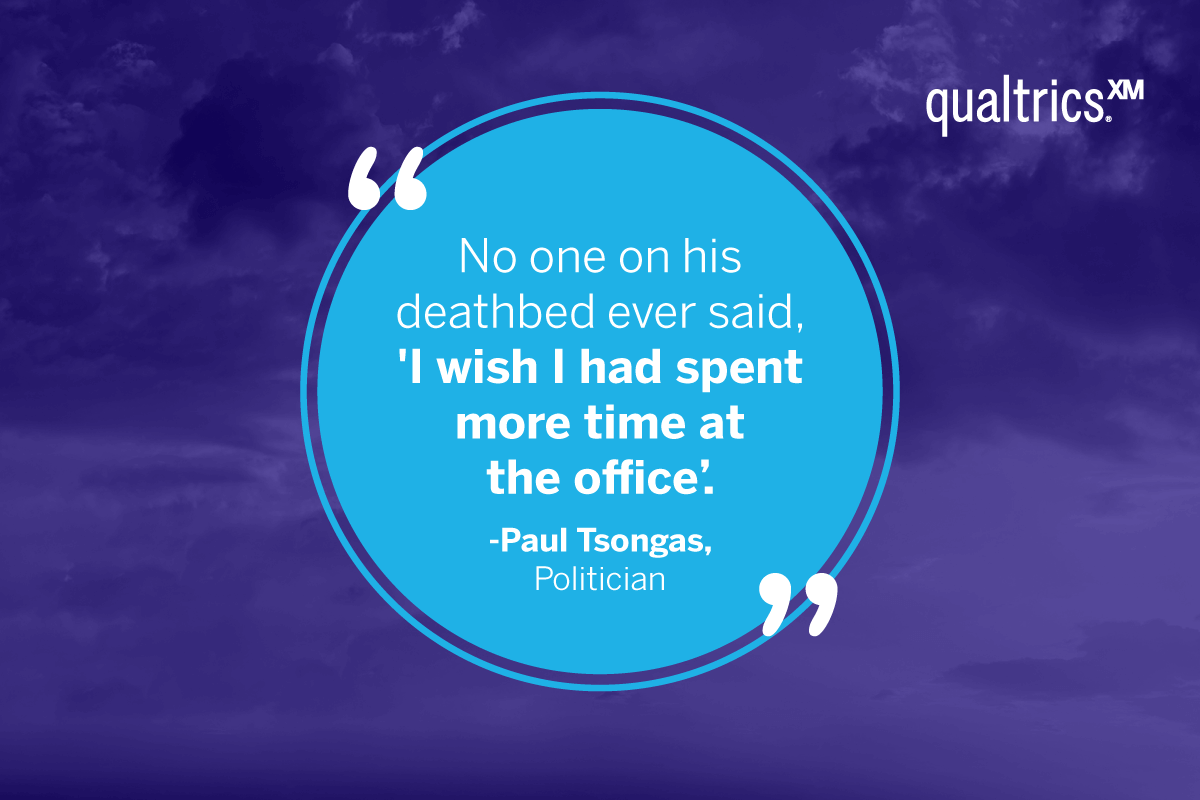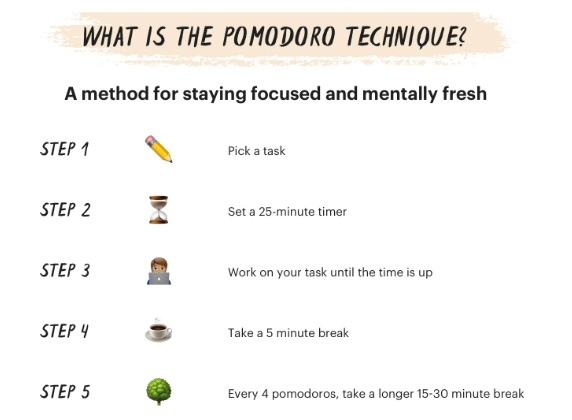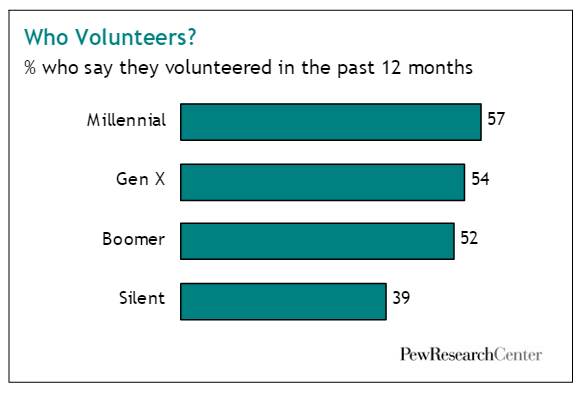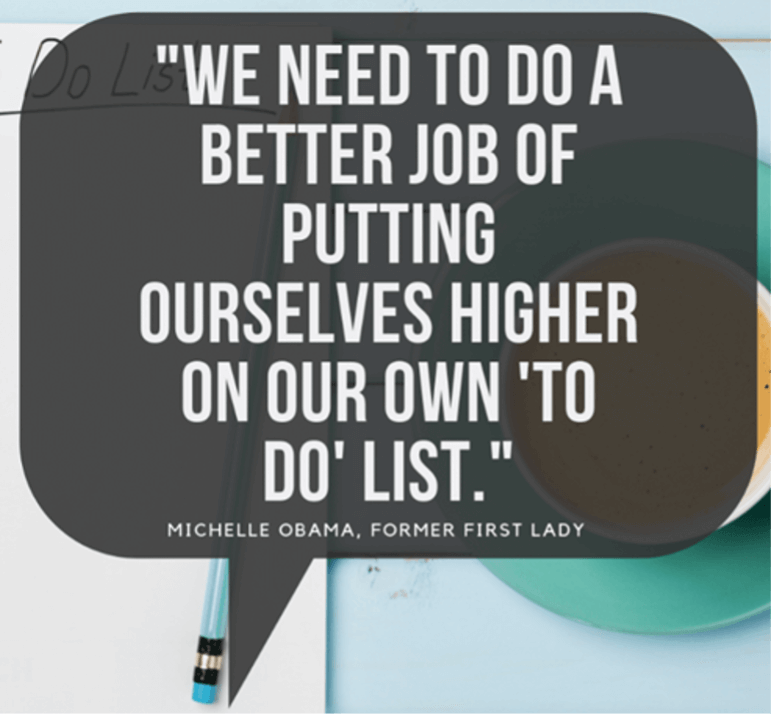Rewind to pre-2020, before the pandemic. The way we defined – and approached – balancing our work lives with our personal lives looked very different from how it does today.
In fact, many employees had a poor work life balance in 2019:
- 26% of work was taken home and done at evenings and weekends
- 40% of people were still on their computers and laptops after 10pm
- Workers spent just 8 hours a day on productive tasks

While working from home (WFH) and working from anywhere (WFA) were beginning to gain some traction by 2019, it took the global lockdowns of 2020 and 2021 to completely disrupt the way we work.
For many people, remote work and hybrid work completely changed:
- our work habits
- schedules
- where and when we get work done
- the boundaries we have between work and home.
While some employees used to complain about commuting journeys, at least they signaled a beginning and an end to the workday – something many remote and hybrid workers now struggle to recognize.
And while some knowledge workers already had access to work-issued technology like a smartphone, the pandemic exacerbated our technology use. For many, video calls were the only means of communication and socialization for a moment in time.
With our constant, 24/7 access to work – and workplace technology – creating a good work life balance is more critical than ever.
With this in mind, we’ve taken a closer look at what’s needed to achieve work life balance, why it matters so much, plus actionable tips to balance work and life in our always-on world.
Free eBook: 2025 employee experience trends report
What is a good work-life balance?
By definition, work-life balance involves the minimization of work-related stress, and the establishing of a stable and sustainable way to work while maintaining health and general well-being.
While there’s no magic formula for balancing work and life, nor one sure-fire amount of time you should allot to one versus the other, work-life balance means you’re equally fulfilled by the duality of your personal life and your professional life.
It also means one facet doesn’t dominate the other, and that when it comes time to switch gears, you feel energized by what’s in store for you that day.
Of course, achieving this balance – especially in our post pandemic new normal of work – is not achieved without being intentional about it. As a manager, it’s important to not only find that balance for yourself – and lead by example – but to help your employees find their balance, as well.
The key to achieving work-life balance relies on not just what you do while you’re working (i.e., doing meaningful work, finding purpose in your work, feeling like what you do matters, and that you make a positive contribution), but what you do outside of work, as well.
In other words, finding fulfillment in hobbies or having go-to methods for restoration are equally important to striking that balance.
And again, work life balance will look different to everyone. Helping employees achieve a work-life balance takes attentive listening to your people, as well as a flexible and iterative approach to find what works best.
Why does a good work-life balance matter?
Since the start of the pandemic and beyond, employee well being has suffered. Especially for those working from home for the first time, remote and hybrid work meant working more – and not knowing how or when to switch off.
If an employee isn’t feeling their best, they can’t focus on their work. Therefore it’s critical to take care of your people – and help them establish a healthy work life balance – so they can be productive for your business.
It’s also critical to support your people with well being and mental health resources. Why? If you don’t invest in employee well-being, you risk employees burning out, not being as productive as they can, and increasing safety risks. These risks include accidents at work, which can have detrimental emotional, physical, and financial implications.
A recent study we carried out revealed burnout and stress as among the top reasons why employees say they will look for a new job in the next year. And we’re already seeing this taking place, in what many are calling The Great Resignation.
16 ways to help your employees balance work and life
Promoting a healthy work life balance means looking at the bigger picture – workload, health, well being, socializing, restoration, and more – and taking a holistic approach to integrate all of those facets into a careful balance that sustains, nourishes, and motivates your employees to be their best selves inside and outside of the workplace.
Not sure where to get started? Here are 16 ways to help your employees establish a better work life balance:
1. Recognize that each employee is different
Some employees may be happy with how they manage their personal life vs. their work life. Others may struggle and feel that they haven’t got their work life integration right yet. Some people thrive on starting work early and finishing early, whereas others function better starting late and finishing late. Some people would love to job share, go part time, or have flexible work hours but don’t quite know how to articulate that with their leaders.
Companies that attract and retain top talent do so because they recognize that every employee is an individual, and personalize their experiences at work to get the best out of them.
2. Offer flexible work schedules and hybrid working
In one poll, 81% of employees considered flexible working to be important and valuable. Workers who are empowered to manage where, when and how they work, being able to fit in personal activities as well as work remotely tend to demonstrate more employee engagement and a more positive employee experience than those who have a more rigid, controlled workplace experience.
3. Focus on productivity rather than long hours of work
Some jobs take less time than expected, some take more. When employees feel they don’t have to do a full eight-hour day every day if they’ve finished their tasks, but will put in extra time when the job requires it – that’s a healthy work environment. It’s a work culture focused on achievement, not clock-watching.
4. Insist on breaks
There’s a reason TED talks are 18 minutes long – people’s concentration tends to wane after more than 18 minutes. And the Pomodoro technique for beating procrastination and improving focus recommends a break every 25 minutes:

All this screams that taking breaks is good for employees’ work life balance. Encouraging breaks away from the desk, short walks, or moving to other areas of the office for a change of scene is an important aspect of a well being program.
5. Allow free time for volunteering and giving back
Millennials, who are increasingly becoming influential in the workforce, are the generation most likely to have volunteered in the past 12 months, according to research by the Pew Research Center. They tend to be more motivated by social justice and action rather than just cold, hard salary when looking for an employer.

Of course, the need and willingness to give back is not just confined to millennials. Many workers whose employers give them paid time to do some good out in the community feel good about themselves, and bring this positive energy back into their job.
6. Support parents
One of the employee groups that finds it hard to achieve work life balance is parents. Mums and dads want to spend quality time with their children, and you don’t want to lose your highly skilled people. To help out parents you could:
- Help with childcare costs
- Provide a company crèche
- Provide good, equal benefits for maternity, paternity or shared parental leave
- Offer job shares or part-time roles
7. Offer useful benefits
An enlightened employer will recognize their employees’ work life balance needs, such as maintaining a healthy lifestyle, and not letting annoying, stressful chores encroach into personal time.
You could offer employees:
- Subsidized gym memberships
- Free mental and physical fitness classes (yoga, Pilates, mindfulness)
- Use of company vehicles or fuel allowance for private cars
- Dry cleaning discounts
- Free food and drinks
- Taxation advice and support
8. Help employees manage their workload
Workload is a powerful buffer to workforce safety, resilience, and well being. Research from Qualtrics’s 2020 Global Workforce Resilience Report revealed that employees who were at capacity in terms of workload felt the best about their safety, resilience, and well-being.
Conversely, those employees with workloads far below their capacity expressed negative views of the same factors.
9. Prioritize your employees’ physical health
Employees’ physical health plays a major role in their overall well-being, as well as their engagement and attitudes towards work. When employees practice unhealthy habits – such as not getting enough sleep or eating diets low in necessary nutrients – not only do they not feel their best, they can’t perform their best at work.
Wellness programs, such as on-site (or virtual) yoga classes, fitness challenges, nutrition coaching, sleep coaching, and more, can help promote healthy habits and a better work-life balance.
10. Provide mental health resources
As mentioned above, stress and burnout are two of the biggest threats to employee well-being. To help employees cope with stress and find a better balance, organizations can offer mental health resources – such as counseling – through an Employee Assistance Program (EAP) or other stress management resources. These could include (on-site or virtual) stress management classes, courses in meditation or yoga, or chair massages.
11. Support employees with making social connections
Employees who have supportive connections in the workplace are more likely to feel connected to their jobs and more engaged with their work. For those employees who lack social connection, organizations can help by facilitating like-minded connections in a healthy setting.
Whether it’s through book clubs, running (or walking) clubs, on-site fitness classes, or virtual fitness challenges, employees feel more engaged (and happier!) when they can connect with their colleagues outside of work, as well.
12. Encourage restorative time
One of the more common misconceptions about burnout from work is that work alone is the problem. When, in reality, what we do outside of work is just as important to preventing burnout.
Talk to your employees about how to engage in restorative activities that are meaningful to them outside of work. The key here is to choose activities that aren’t work-related – and better yet, don’t involve looking at a screen. No one activity is better than the other; encourage employees to pick one or rotate through their favorites – it’s completely up to them.
13. Support occupational well-being
Work-life balance and productivity go hand in hand. Employers benefit from supporting healthy habits that boost work performance.
For example, companies can encourage employees to take regular breaks throughout the day, go for a walk when they are feeling stressed, and provide healthy, energy-boosting snacks in lunch and break rooms.
Some organizations are going a step further to reimagine the workweek, and have adopted working four days a week instead of the traditional Monday through Friday 9 to 5.
14. Create boundaries between personal and workplace technology
When you’re working from home, keep your phone out of your office/workspace to prevent the blurring of home life into work hours. Likewise, create boundaries with your personal phone and work.
For the bold, try removing work-related apps, such as email and Slack, from your personal phone. Or, try moving the apps to a folder so they’re less visible when you’re using your phone when you’re not engaged in work. And definitely turn off work-related notifications after hours, weekends, and when taking time off.
15. Take time off from work
For many people, taking meaningful time off was difficult during COVID because they couldn’t travel for a vacation. And while a staycation can be restorative, the temptation to check work tech might still be there.
In this instance, always encourage employees to fully step away from work – and work tech – while they’re on vacation time. Doing so helps them recharge and return to work with renewed energy.
16. Be mindful of the example you’re setting
Practice what you preach, especially if you’re a leader setting an example for your team. Instead of sending an email after work hours or on a weekend, use technology to your advantage and schedule emails and Slack messages to send during work hours only. That way, the recipient won’t feel pressured to respond or even passively check in when they’re not working.
How do you know your employees are achieving work life balance?
Tune in to your employees’ needs for a work life balance
Striking a healthy work-life balance takes listening to your people, and taking action on their needs. For example, a study by the Future Forum revealed that flexibility is now one of the top factors influencing attraction and retention at organizations.
Indeed, nearly all (93%) knowledge workers want a flexible schedule, while 76% want flexibility in where they work.
Ask your employees what they think
Want to create the best work life balance for your employees? Simply ask them.
Research shows that nearly half (47%) of employees have never been asked by their employers how their work and life experience can be improved.
Ask probing questions using employee surveys. The following will give you an idea of the kinds of question to ask:
- How happy are you with the hours you currently work?
- Do you often bring work home with you?
- Do you regularly check emails out of work hours?
- Does your work schedule let you spend quality time with family and friends?
- Has work ever prevented you from attending a personal event?
- Do you have enough time for your hobbies and personal interests?
- Does your manager respect your work life balance?
- Is the company’s overall culture empathetic to your need for work life balance?
Knowing what employees’ expectations are can help organizations understand their needs and preferences – including how and where they want to work, as well as what matters most to them – and then be sure to take action on those expectations.
2025 employee experience trends report
